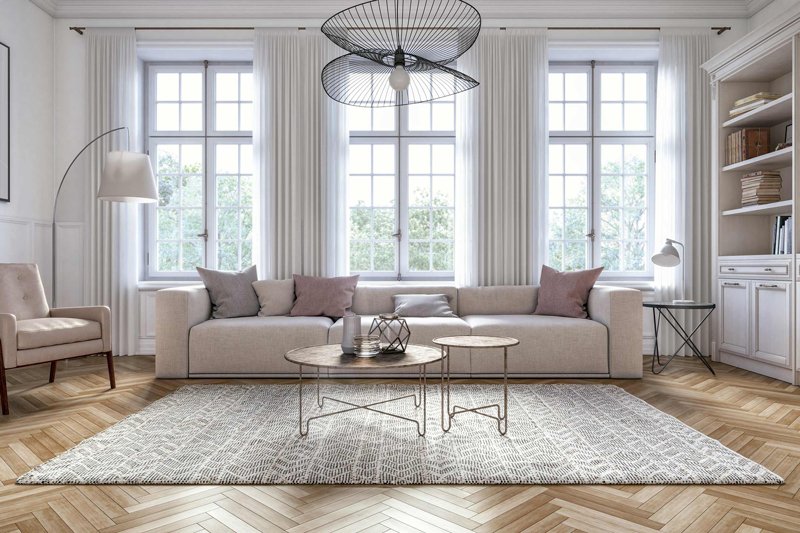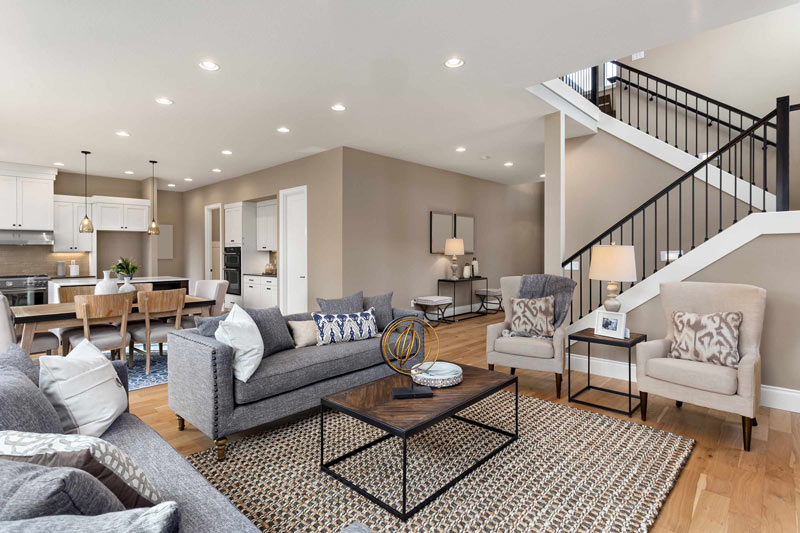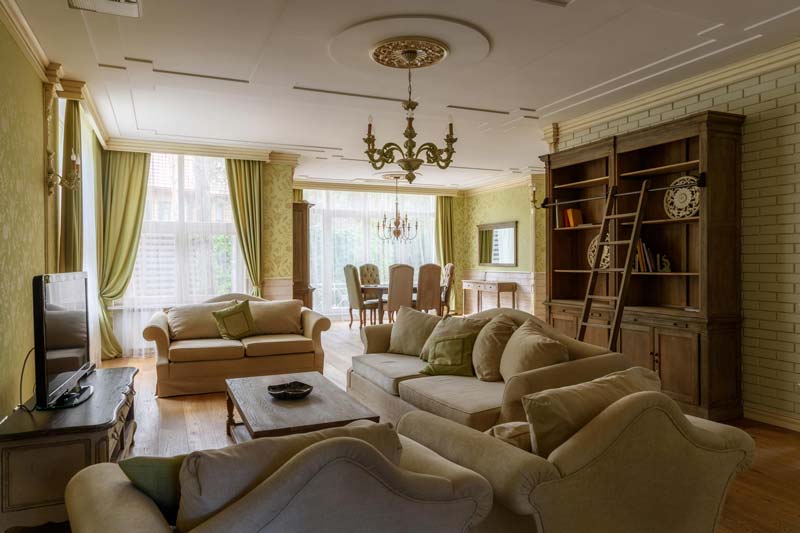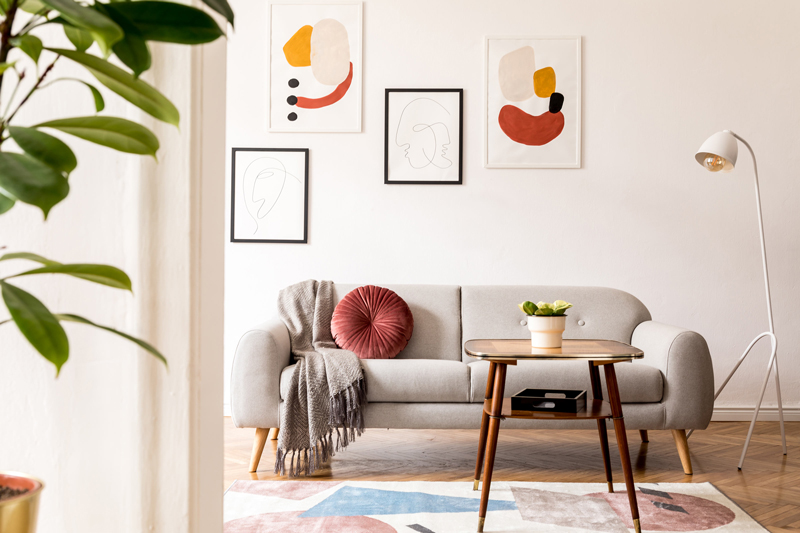FDIC-Insured - Backed by the full faith and credit of the U.S. Government
-
-
-
FNBO
MortgageOct 02 2020
-
What’s Your Interior Design Style? Create an Insta-Worthy Interior
Do you know your Interior Design style? Are you drawn to sleek lines, or rough-hewn? Do you pop-in to antique stores or browse for the latest home-fashion trends? If you’re considering a remodel, renovation, or just want to give your home interior a face-lift, these are the right questions to ask. Embracing your inner-most-design-preferences is an important first step when it comes to choosing colors, furnishings, fixtures and accessories.
Discovering your inner-designer isn’t hard. It just takes a little imagination, a few magazines, a computer that’s powered-up and ready to browse and a willingness to embrace the creative process. Doing this, you’ll start to build a collection of the images and esthetic that speak to you! You can even take an online quiz.
4 Most Common Interior Design Styles
Modern:

Composed of clean lines and crisp simple colors—such as monochromatic palettes or those punctuated with black, white and gray—this style is quite trendy right now. Modern is also characterized by a lack of ornamentation and enthusiasts use restraint, limiting accessories to just one to two items per shelf or table.
Contemporary:
Similar to modern, but continually evolves to incorporate new ideas, furnishings and art. Contemporary is usually considered less trendy than modern but again, you’re looking at neutral palettes and clean lines. A few differences include stark minimalism (few to no accessories) and the incorporation of organic materials, such as hemp or jute, in combination with metals like nickel, steel or chrome. Contemporary is the most popular living room design style according to Home Stratosphere, but if you aren’t drawn to its often unembellished qualities, keep reading!
Traditional:
You’ll recognize the traditional style by its warm colors and layering of furnishings, fabrics and accessories to create a warm and inviting effect. Counter to the modern and contemporary styles, traditional stylists incorporate classic details and woodwork in medium to dark tones. They also enjoy the use of accessories; filling shelves and tabletops with meaningful items.
Transitional:
Transitional mixes the more simple and spare elements of modern with the warmth and sophistication of a traditional style to create a popular and relatively new approach to interior design. Borrowing the layering features of furniture and textiles from traditional with the more nuanced use of accessories from modern, transitional also infuses neutral color palettes with warm pops of color.
4 Tips for Designing the Perfect Space
When it comes to translating your design style into your interior, there are several tips that can help you to create an Instagram-worthy ambiance.
Paint Color Samples:
Paint is one of the most flexible and inexpensive ways to update a room. but it can be fussy! The color that looked perfect in the showroom may look darker or lighter in your specific room and can even take on a different hue.
Before committing to a color, consider painting swatches of your favorites on the wall. Then, live with them for a week or two. Check them at different times of the day to see how they react to ambient lighting and your surroundings before making the final decision. You might be surprised which emerges as your favorite in the end! Remember, too, that paint comes in different finishes—flat, eggshell, satin, semi-gloss—and it makes a huge difference in how it shows up in a room. It will also determine how easy it is to cover, should you decide to repaint later.
Create a Room Layout:
Furniture can have a positive impact on your room as well, or it can totally overwhelm your space, and this is where your decisions become more costly. Before making a purchase, take notes regarding the size specifications of each piece. Then, create a room mockup. This can be as easy as taping the outlines of sizes on the floor and walking around your furnishings blueprint to make sure there’s room for everything, and you!
Accessorize Your Space:
Remember that accessories are the “jewelry” of your space and a way to add some fun or display items of sentimental significance. When placing these adornments, keep in mind that odd number groupings usually look better than an even number and consider playing with different heights and textures.
Turn on the Lights:
Lastly, don’t forget about lighting. Whether you’re hanging a fixture, such as a pendant or chandelier, or placing a floor or table lamp, the varieties are endless and lighting can establish the personality of a room. In recent years, even the light bulb itself has evolved. The wattage, color, look and shape of the bulb you use in a fixture can set the mood and bring character to your space.
Finding a Professional When You Need Them
If you’re lost in the complexities of a new build, uncertain about the placement of new furniture or just want someone to help you look at your surroundings with fresh eyes, hiring a professional might be the answer.
How to find an Interior Designer:
Interior designers are experienced in all aspects of design and can help you with everything from paint selection to completely reimagining your rooms. Interior designers also understand costs and can help you establish and adhere to a budget throughout the process.
The American Society of Interior Designers has teamed up with the Houzz Trade Program to make it easier for home owners to find a qualified interior designer, but a personal reference is often best. Seek advice from your neighbors and friends, or visit to model homes in your area. If you see someone’s work and it matches your style, reach out to them and ask if they have time to meet.
How to Hire a General Contractor:
If you’re looking at a remodel that goes beyond the scope of a designer, adding a general contractor to the team is a great next step—even before engaging an architect or engineer. Bringing the experience of a contractor into the process early can help you with pricing, they understand the local and current market, and it’s likely they work with reputable architects and engineers if the job requires more expertise. If you feel overwhelmed and aren’t sure where to start, don’t be afraid to get the experts involved and remember, it’s like any relationship – if you don’t click, move on.
Redesigning your living space should be fun, transformative and reflect who you are. If your style is a mixture of those described above—go with it! Find a designer who understands your taste and preferences, and as the creative process unfolds, your personal style will emerge.
The articles in this blog are for informational purposes only and not intended to provide specific advice or recommendations. When making decisions about your financial situation, consult a financial professional for advice. Articles are not regularly updated, and information may become outdated.


